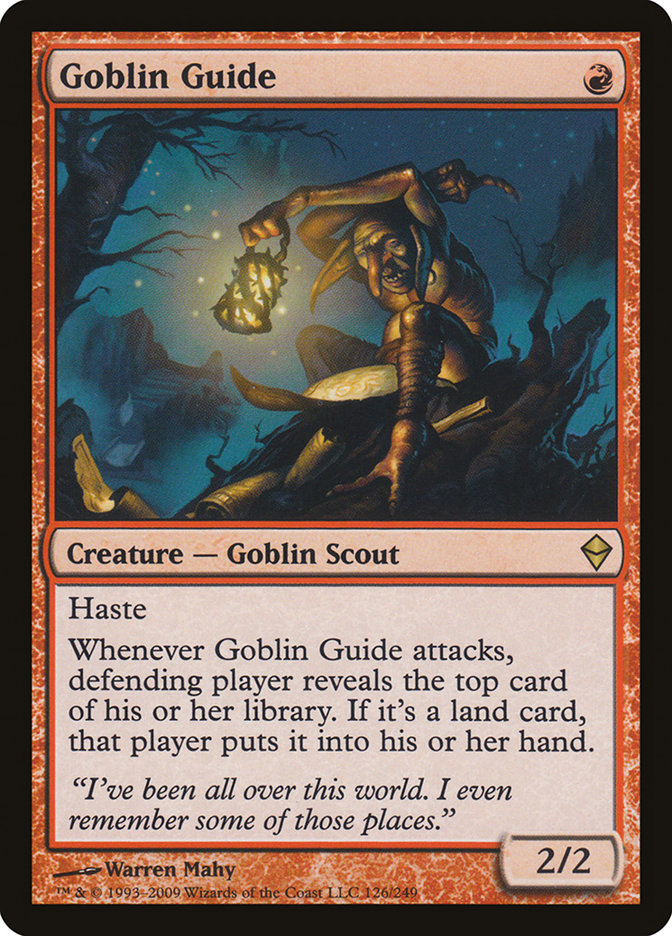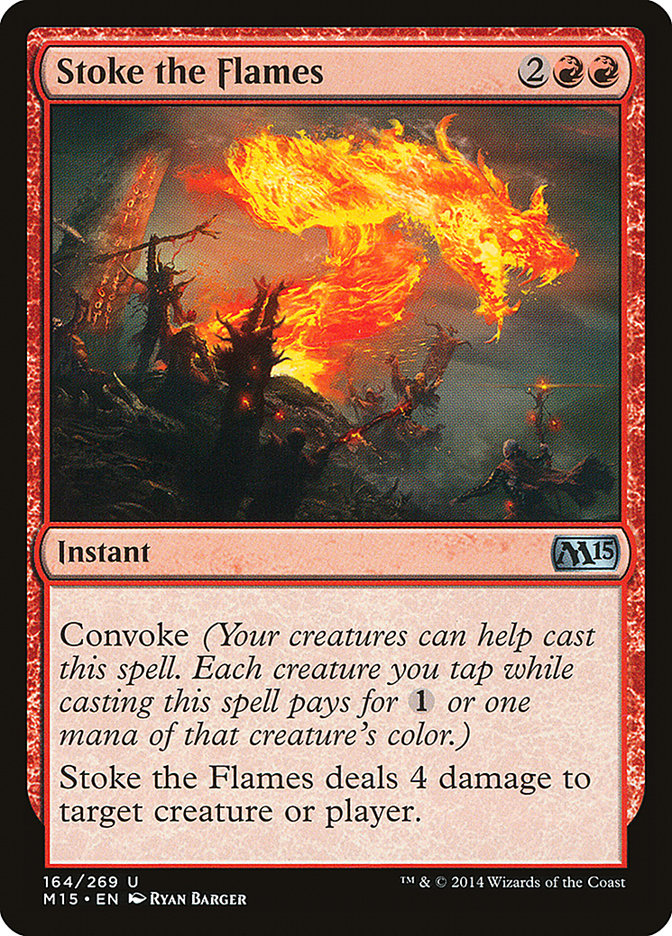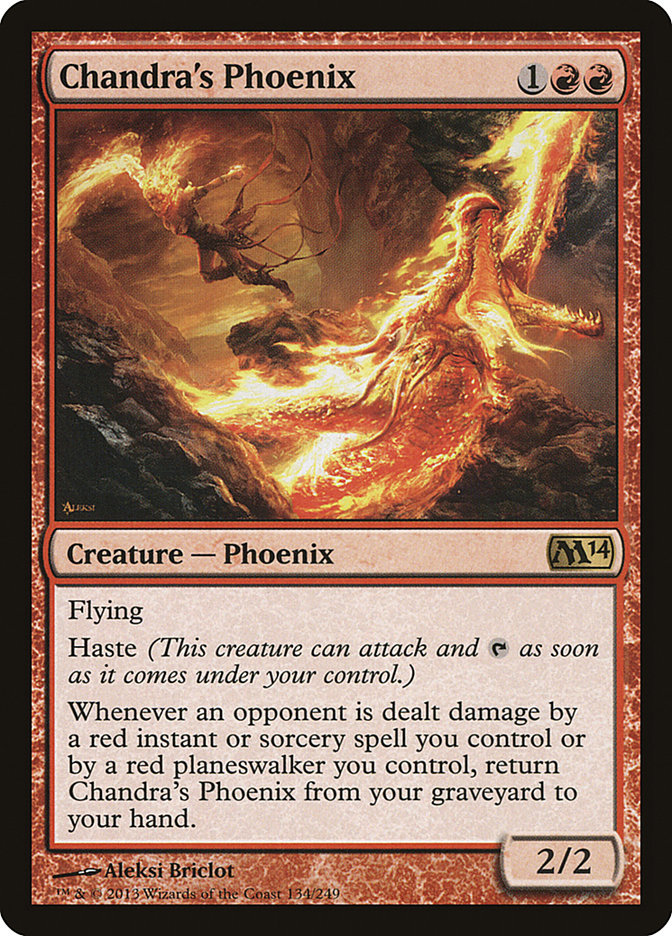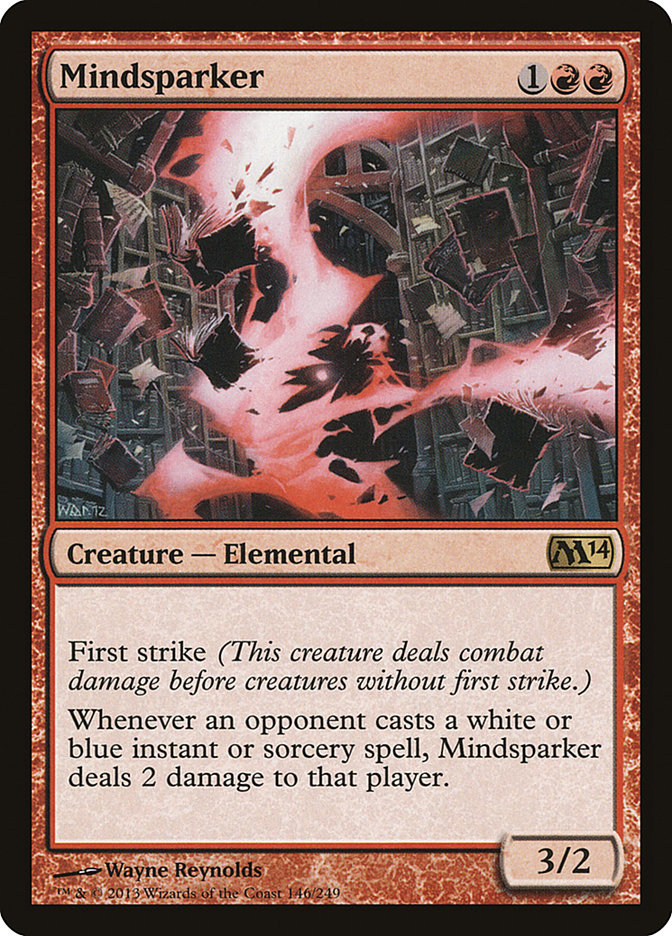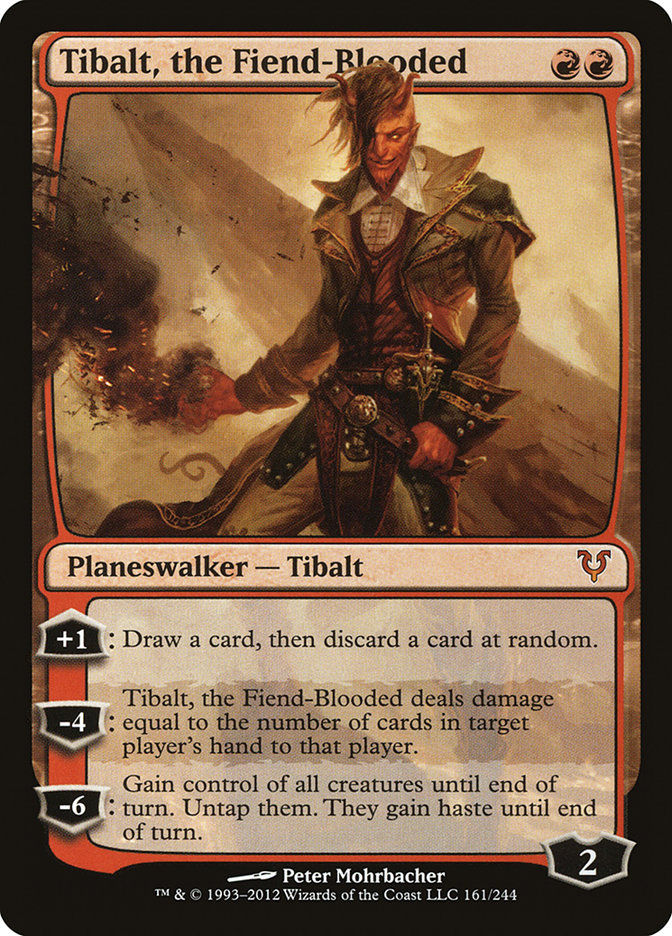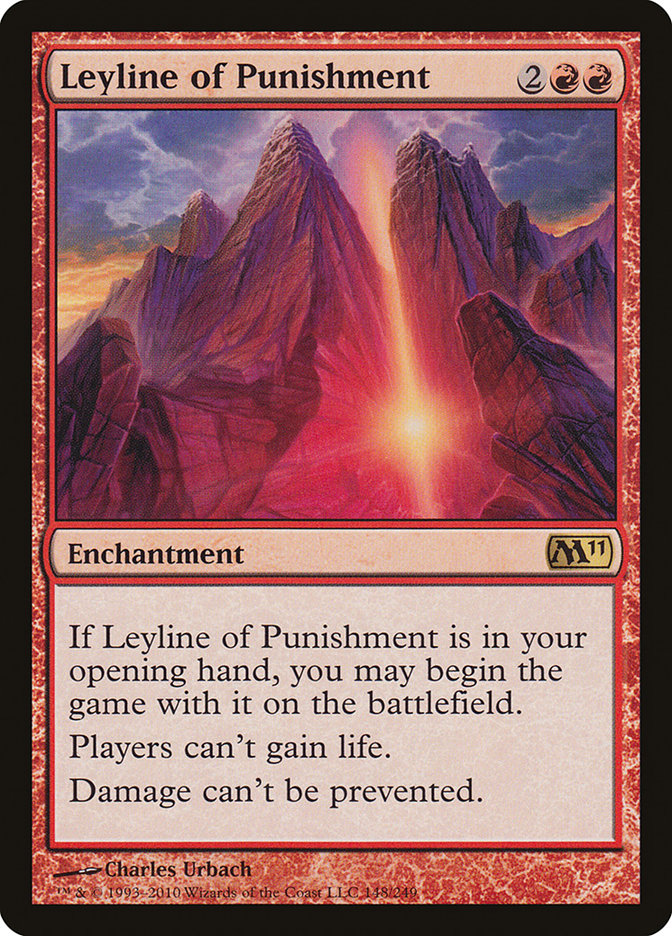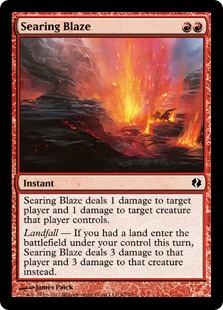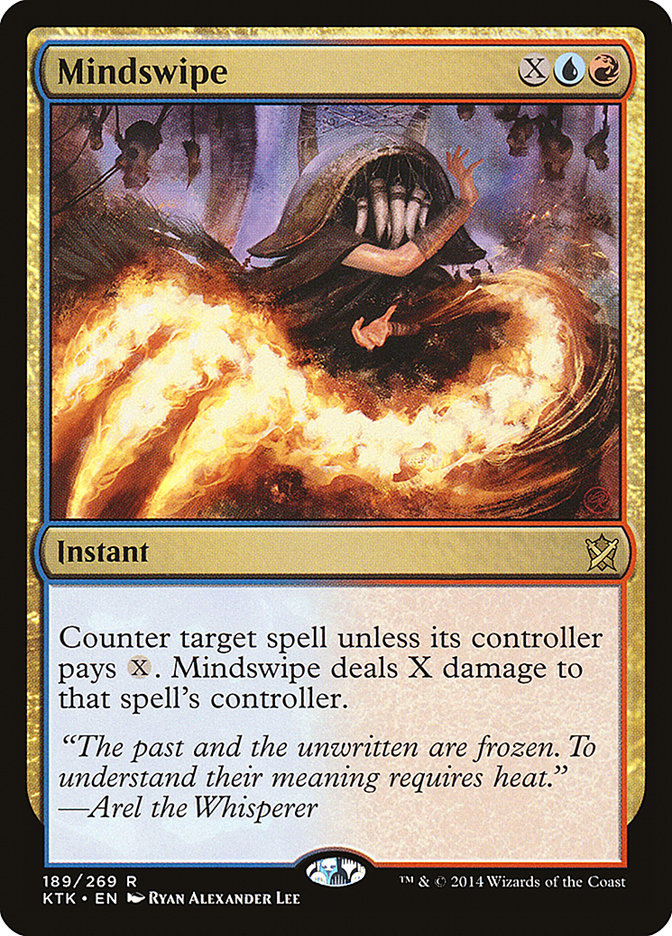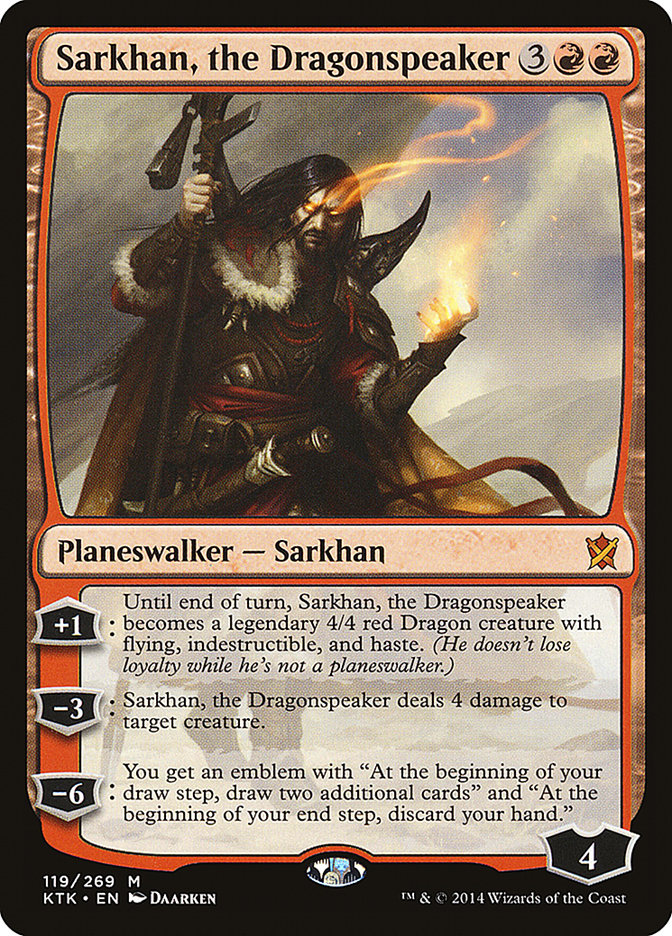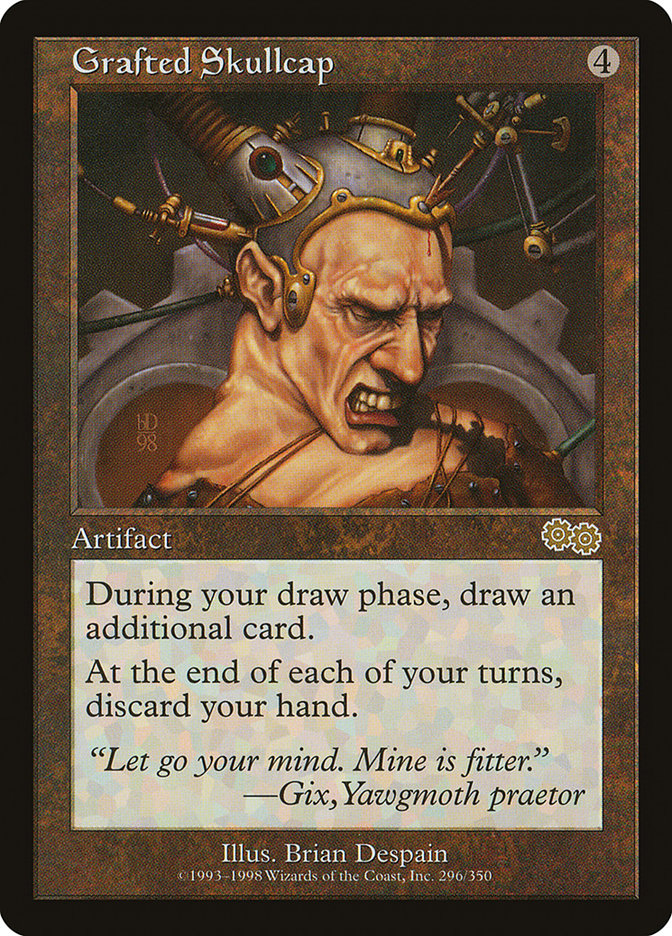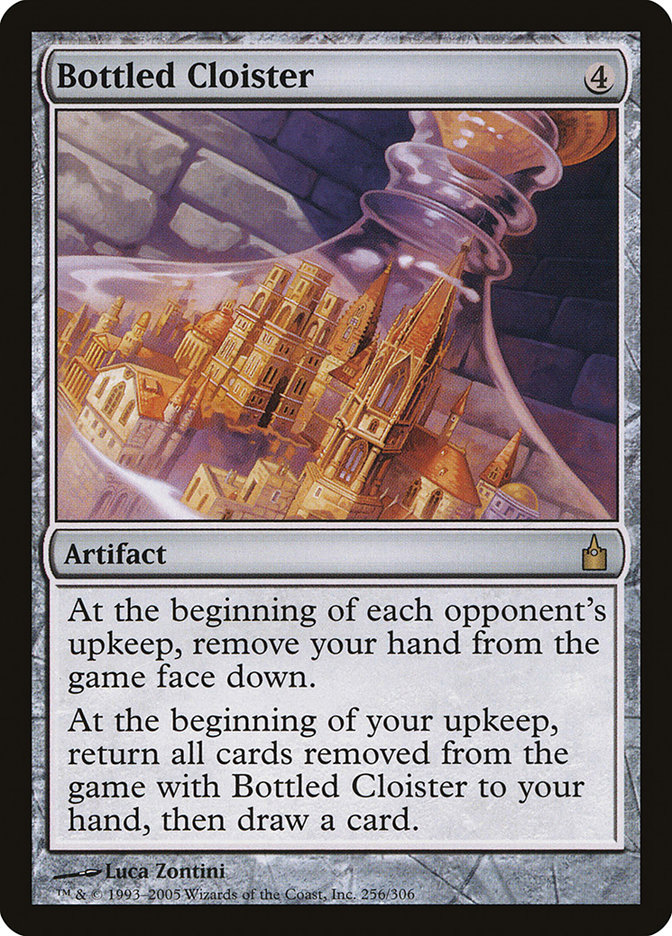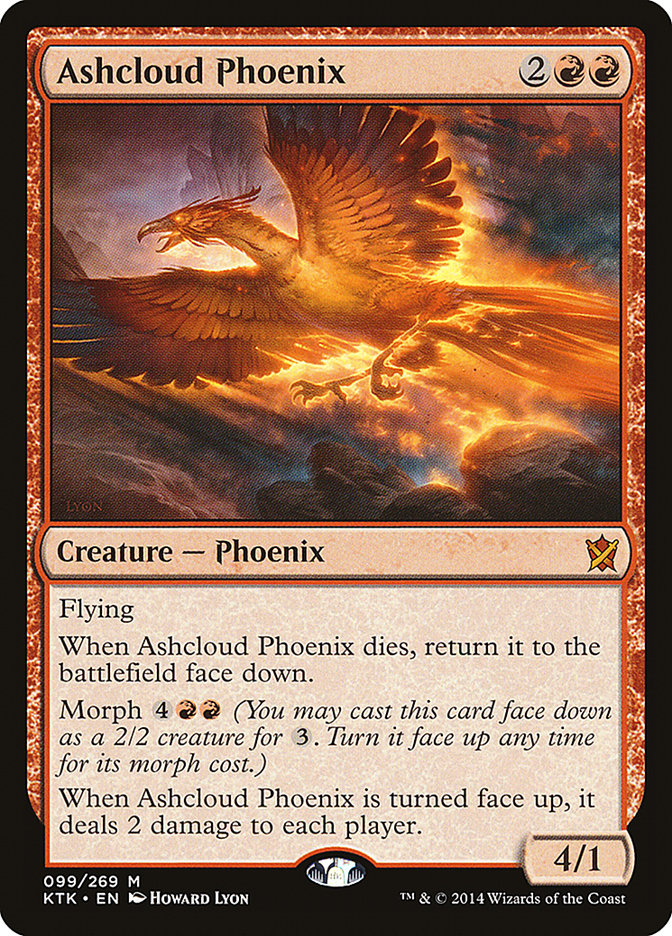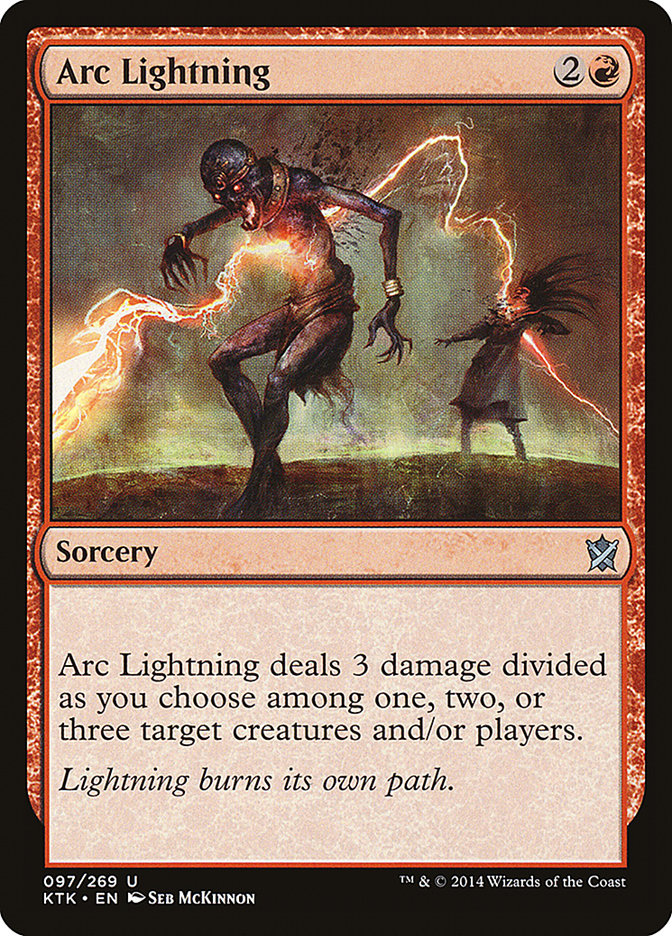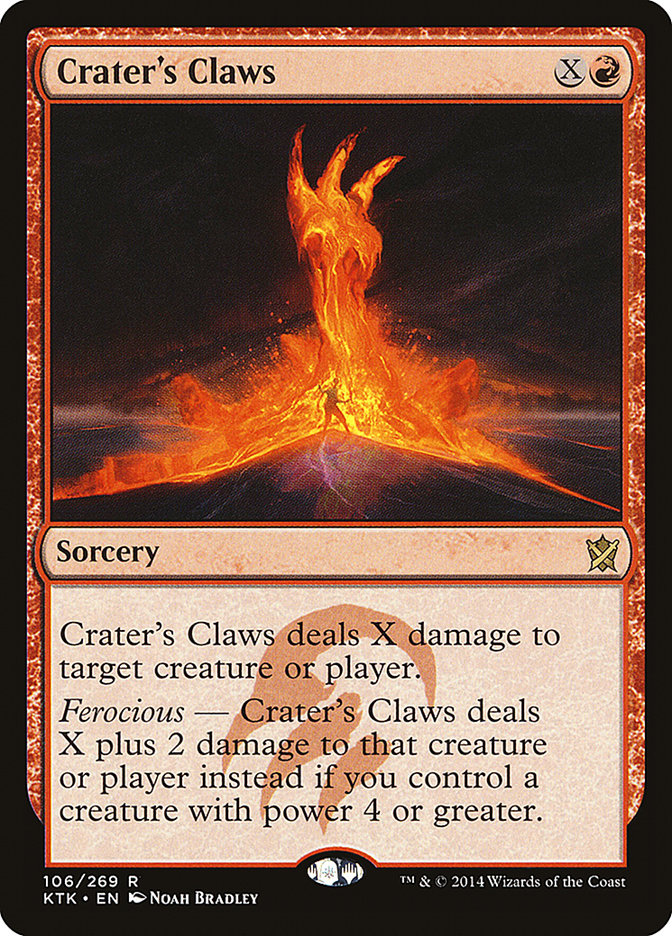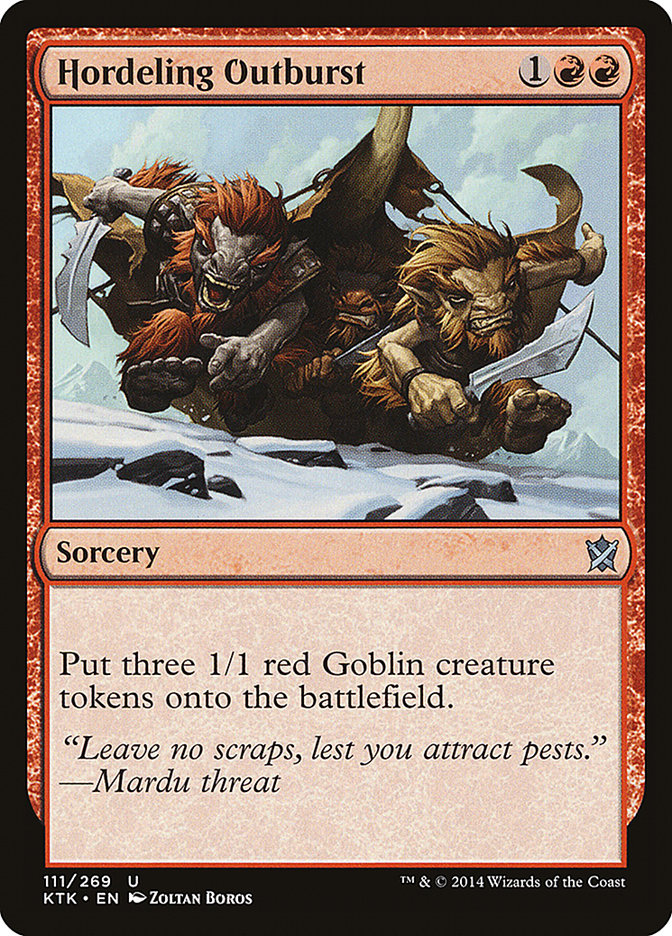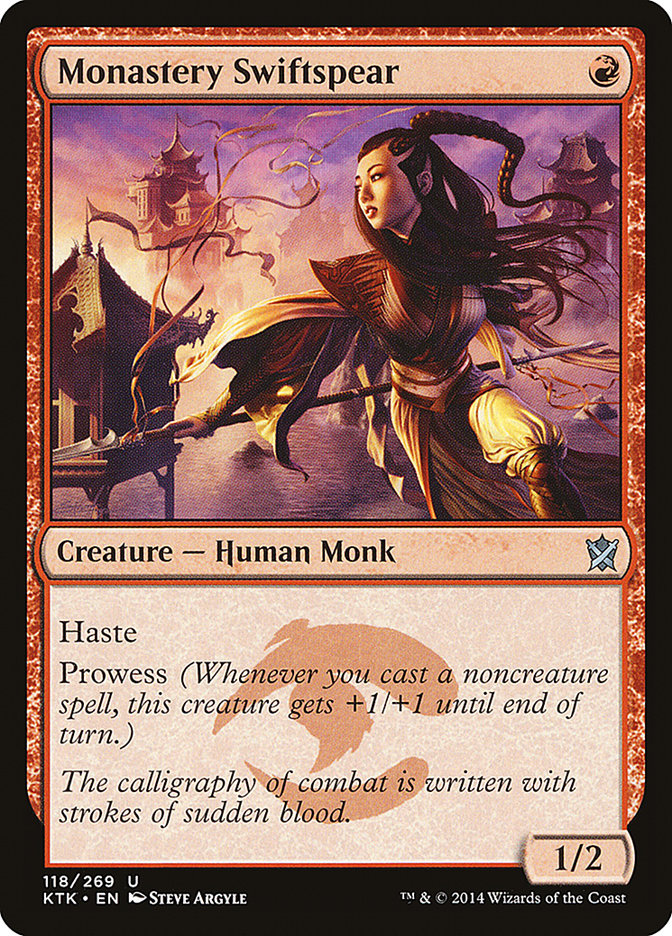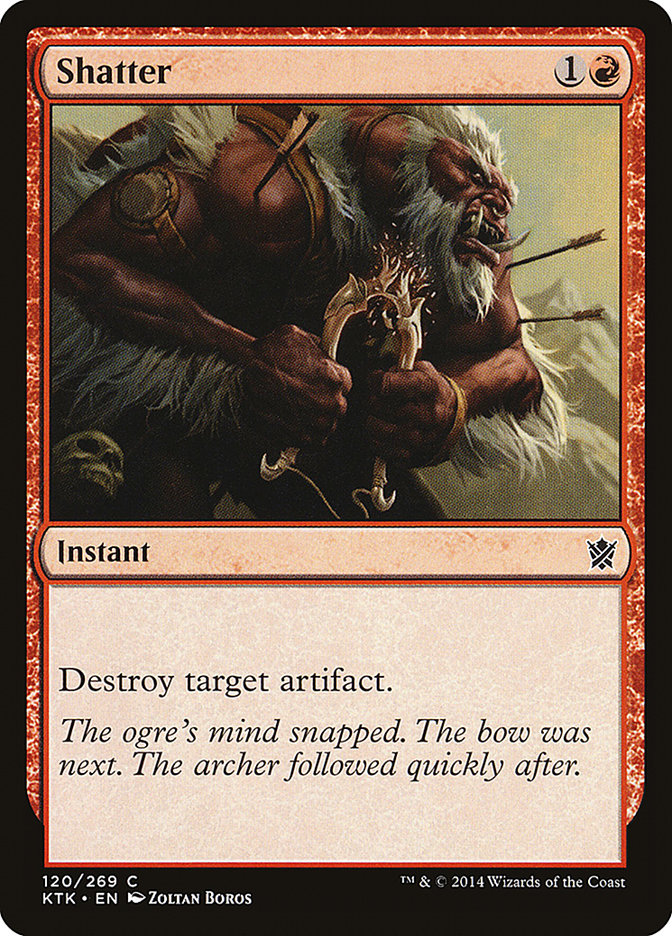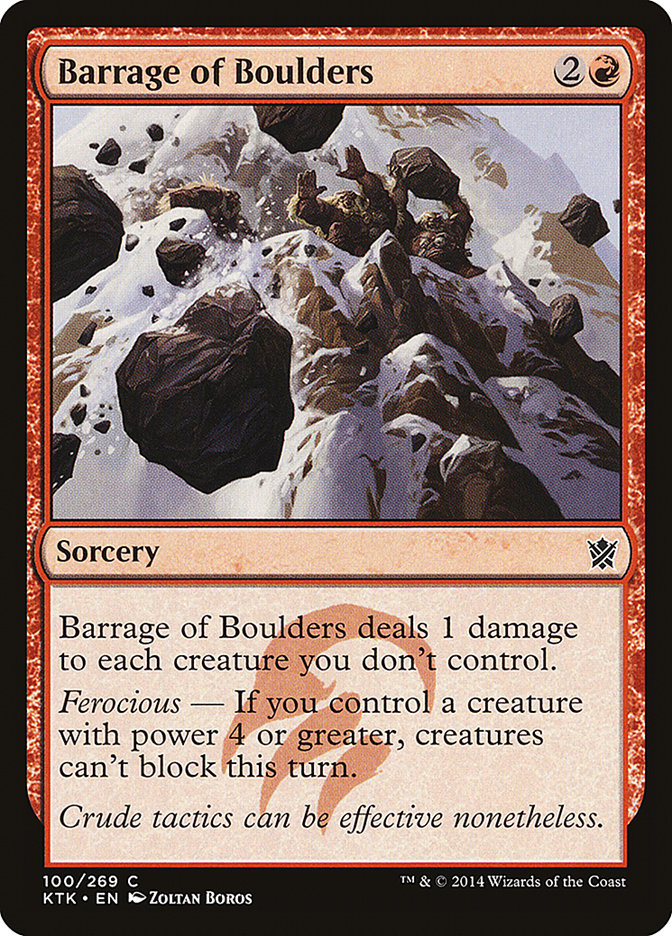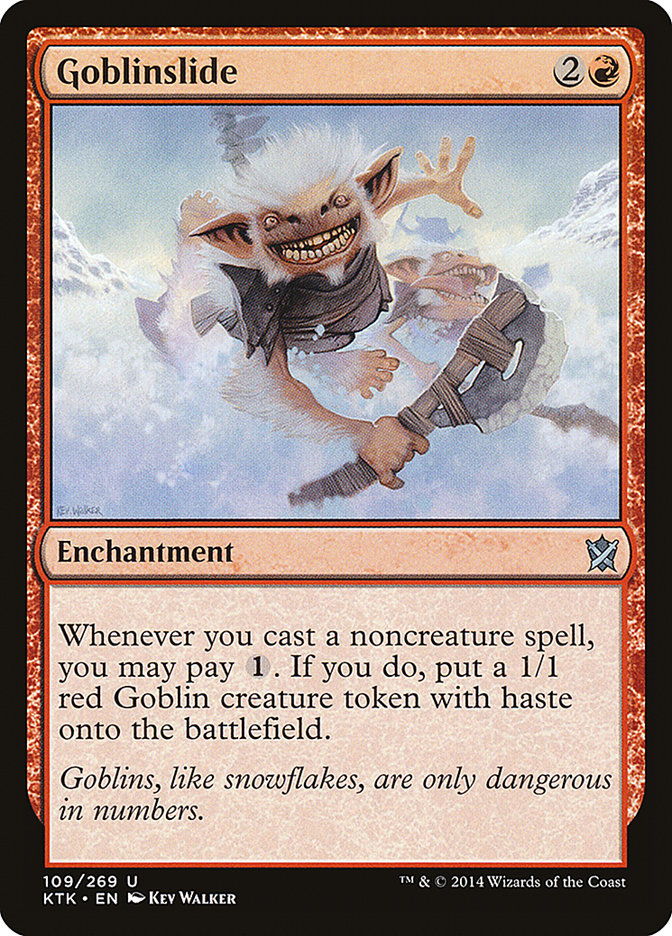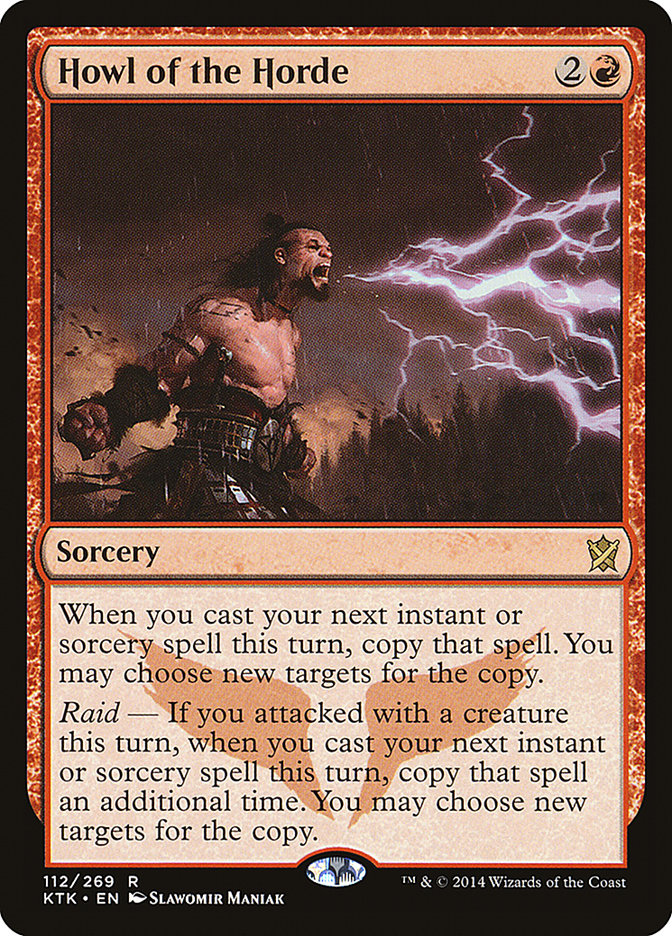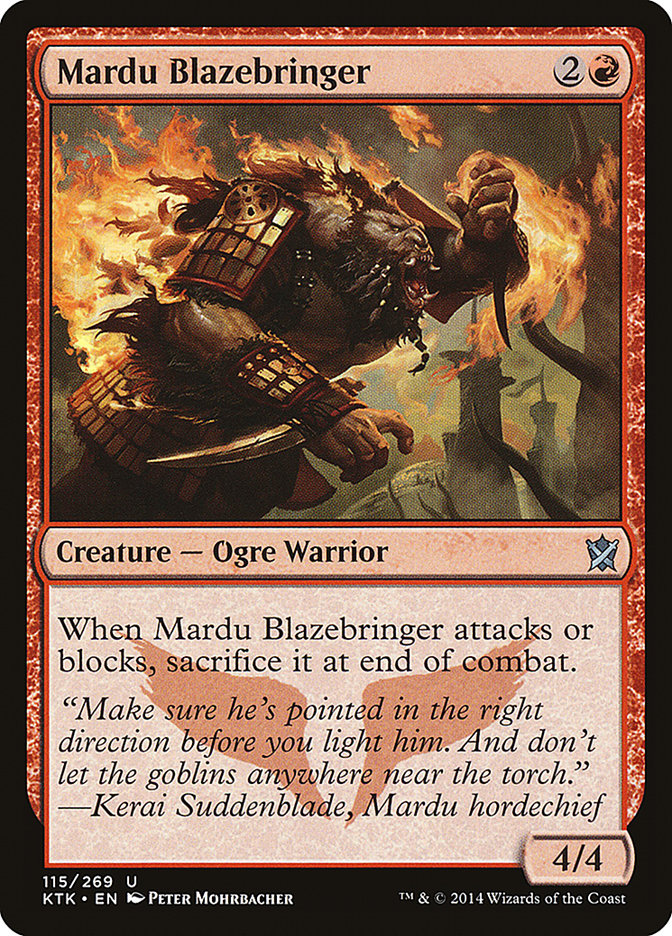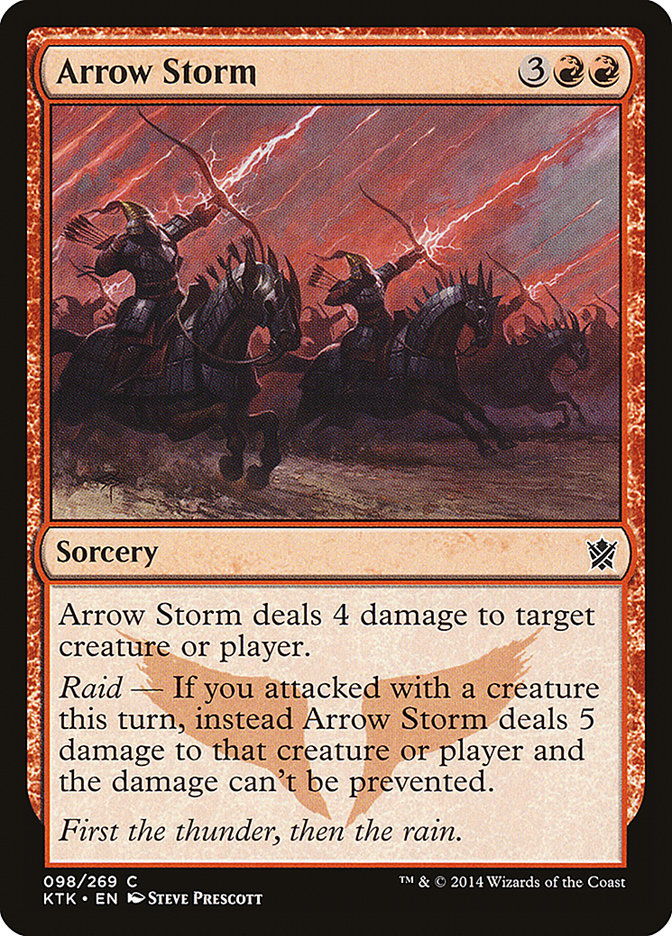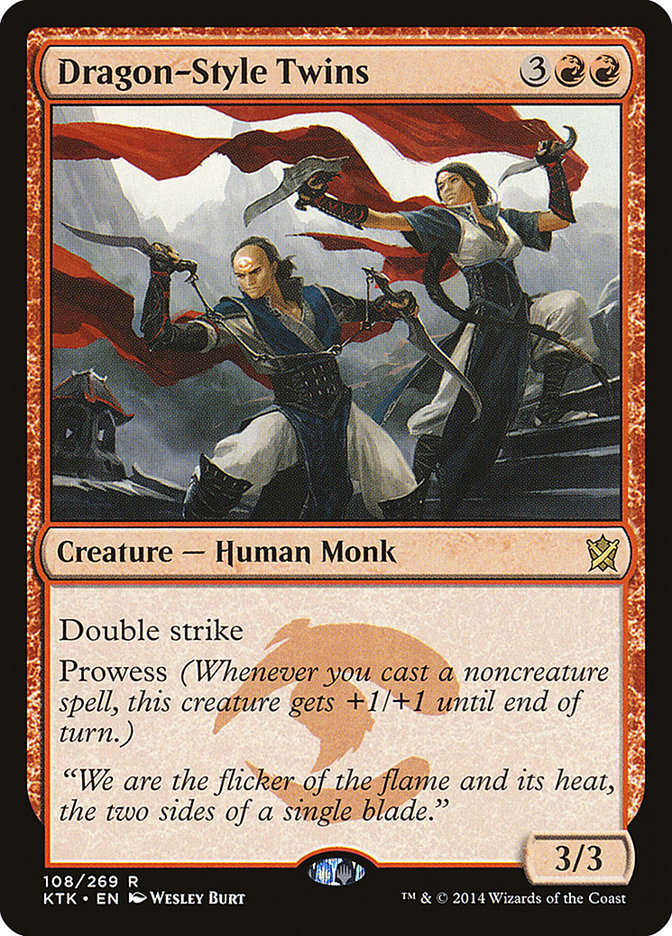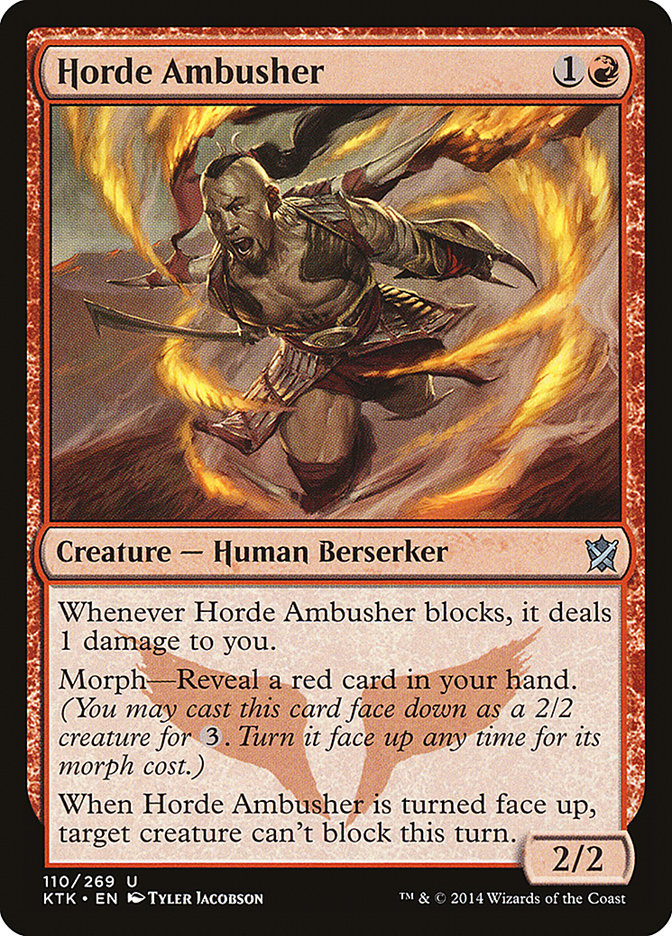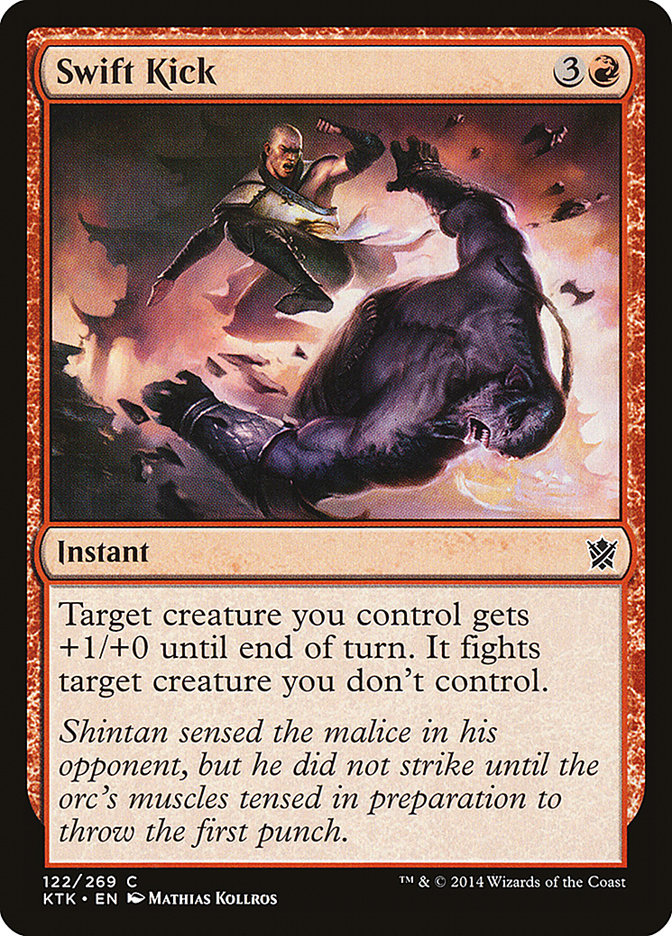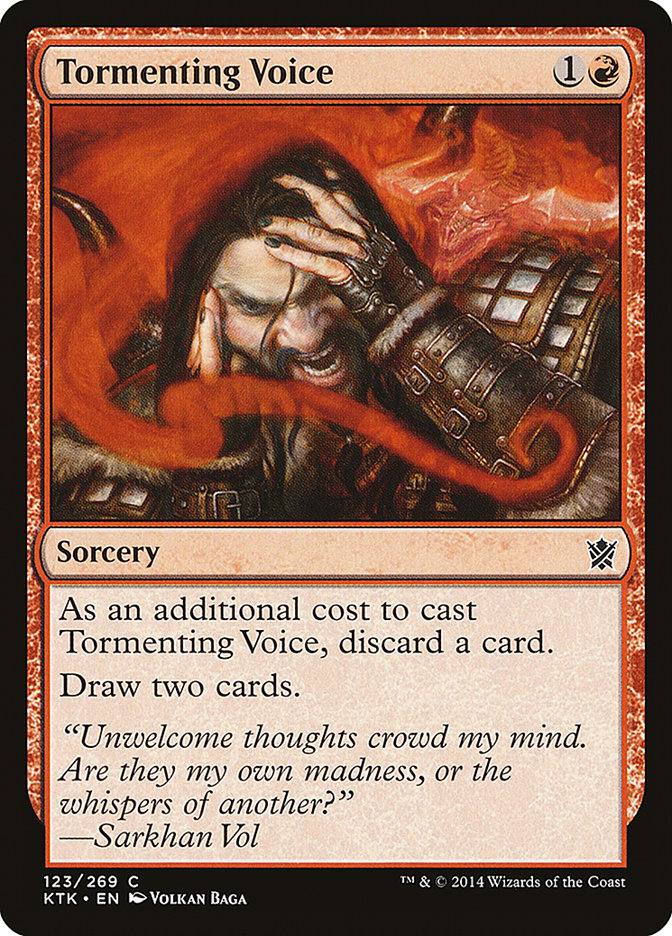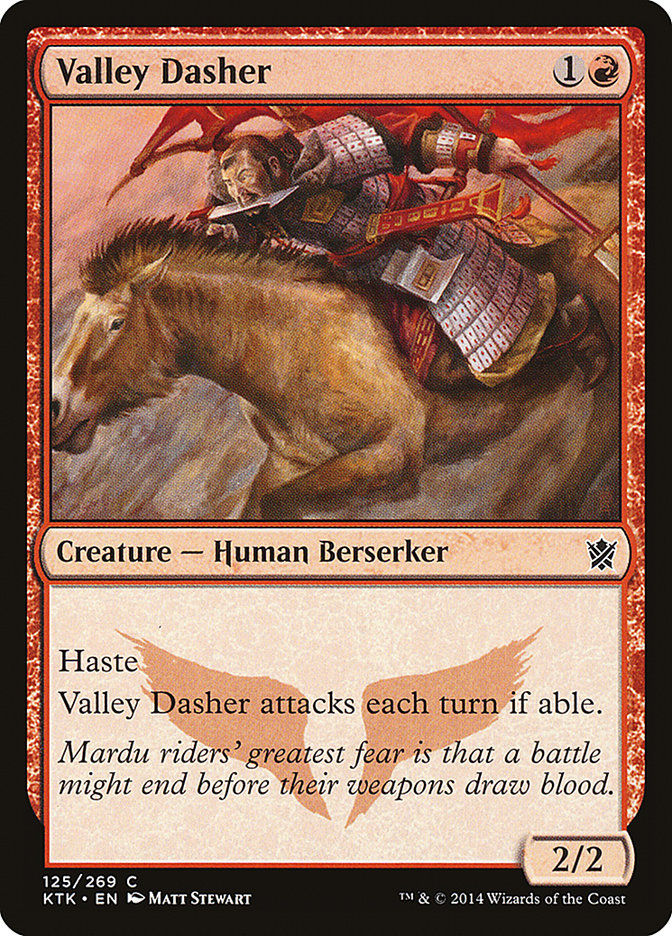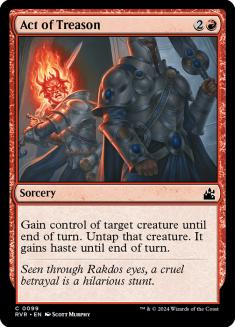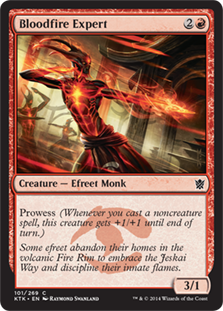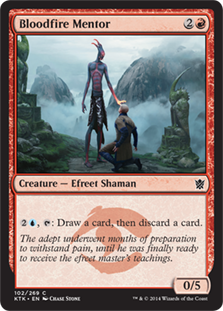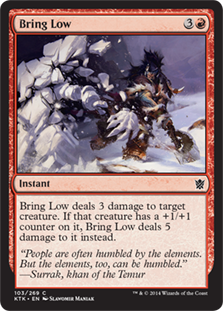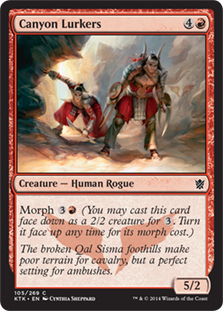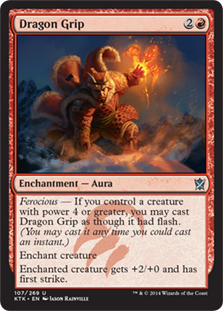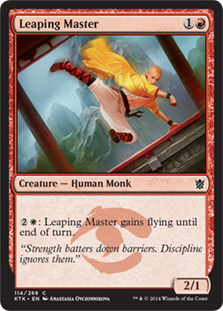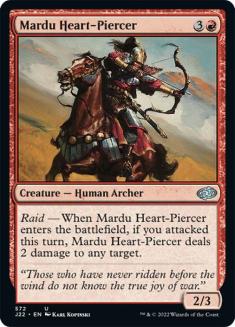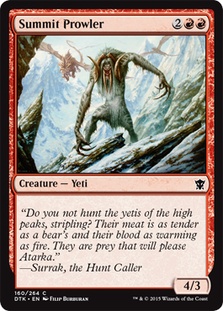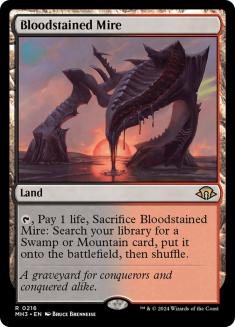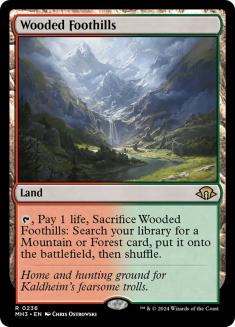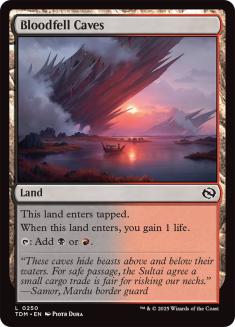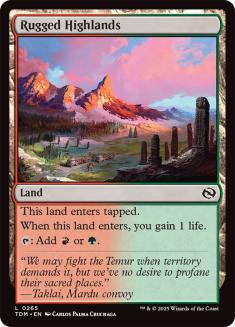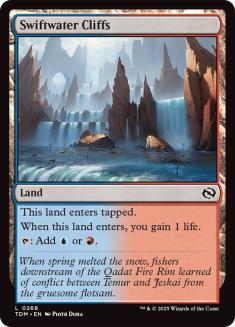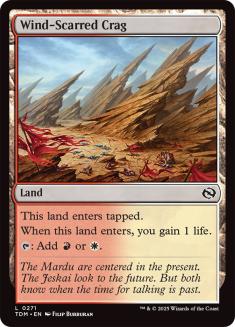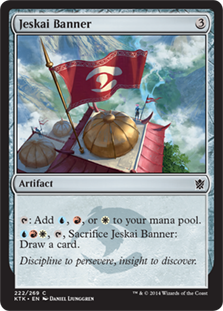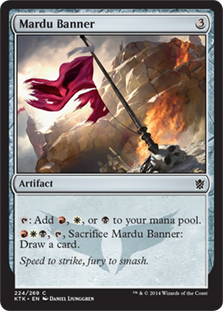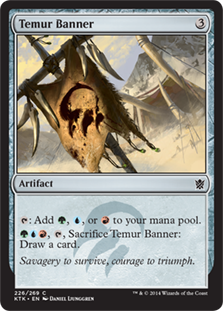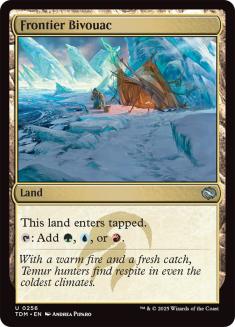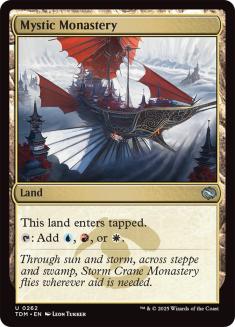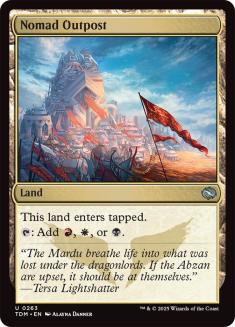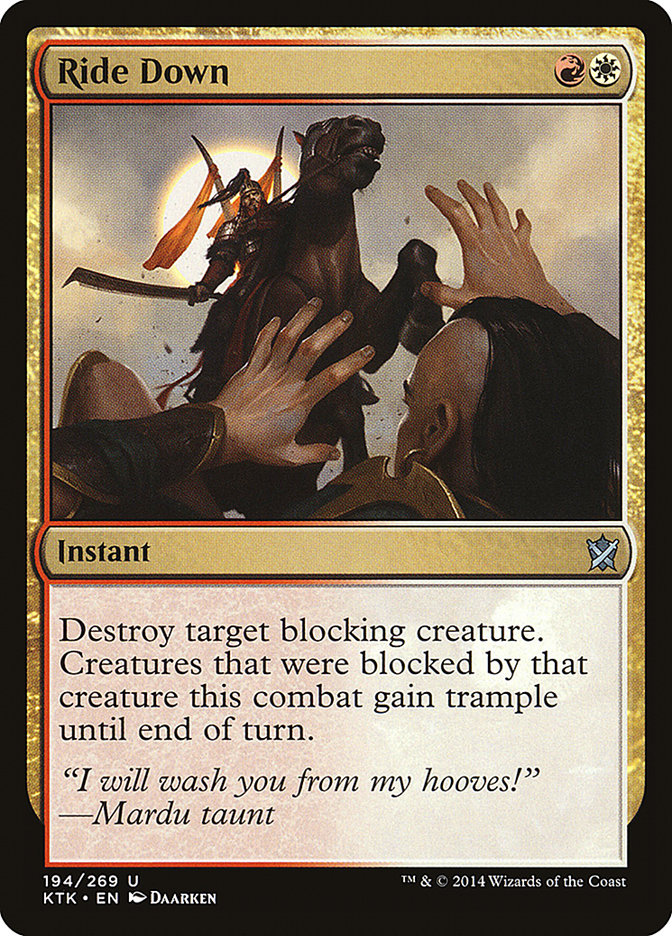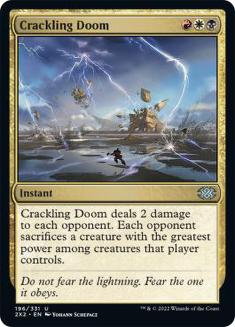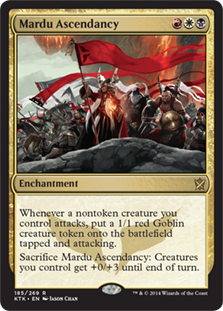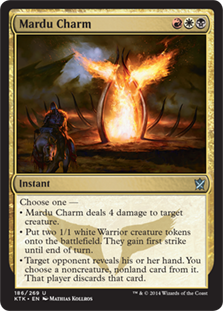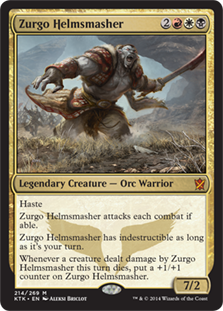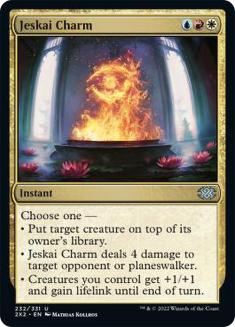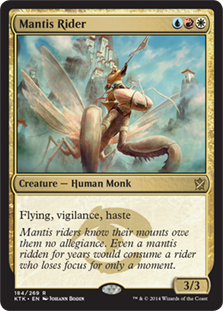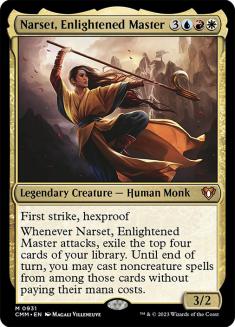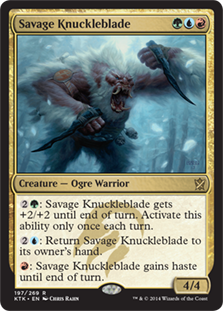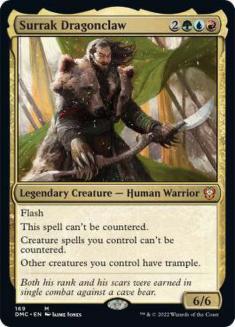Depending on what era of time people know me from, they often have a very skewed sense of what exactly it is that I am about as a Magic player. For some
players, I am the person who comes up with the “wacky” ideas that just might work. Some of these wacky ideas stuck around in the metagame (Counter-Oath,
Scepter-Chant, Annex–Wildfire, e.g.), and some did not (Bloodchief Ascension). For some people, I am the “control guy,” whether it is U/W Control as of
late, or Mono-Blue Thieving Magpie/Ophidian decks. And, for others, I am the “red guy”.
The truth is that I’m all of these things certainly. But, even when I’m not currently playing red, I’m always thinking about what makes a red deck work. Generally speaking, spoiler season and review season is a moment that has continually driven me crazy, because it seems like people don’t
understand what the hell matters.
Let’s use some examples.
High-profile, excellent Magic players said that these cards were no good when they came out (or re-released):
At the same time, they talked about how great these cards were:
A lot of these mistakes come out of an often fundamental misunderstanding of the context with which many (but not all) red decks are operating. Chandra’s
Phoenix, for example, wasn’t appreciated because it was an expensive card for “just two or maybe four damage,” not understanding that in the rush
decks, providing cheap, resilient evasion could be an option for some of them (those that would choose to run a few more mana), even if it wasn’t for all
of them.
Mindsparker, conversely, was not a relevant card simply because in that same moment Mindsparker was fighting for space with Boros Reckoner. The
context of the moment dictated that if you were going to justify a card, you needed to justify it pretty hard.
Now, of course, I’ve also made my mistakes. I still remember when this card came out:
I imagined that it was only going to be useful as a sideboard card. What I pictured was that it was just another version of Lash Out, which was actually a bad
card for play in Standard. The big difference between my mistake and theirs, I think, was applying the wrong lessons from the wrong moment as
opposed to not having a thorough grounding in the many different ways that red cards can be useful.
This time around, looking at red from the perspective of Khans of Tarkir, it is actually going to be a real challenge. This is a multi-color set, and it is
going to be hard to justify not dipping somewhat into the rainbow of colors available. At the same time, not all cards that are red are red. My thought process on imagining what it means when I say “a red deck” is not cards that merely have red in their casting
cost, but cards that are in decks that primarily rely on red mana. If we take the example of Counter-Burn, an ancient archetype that only rarely worked
(and even then it was actually a Tier 2 deck most of the time even if people treated it like Tier 1). It might include lots of red burn, but it is a deck
with a distinctly blue philosophy. This is in part why this card isn’t really one I find myself thinking of when I think about what matters most to red
decks in Khans of Tarkir.
Enough preamble. Let’s get to it!
The Elephant in the Room
Now, obviously, Sarkhan isn’t an Elephant. I only bring this up because there are actual elephants in Khans of Tarkir. The real thing I wanted to
speak to about Sarkhan involves the common discourse I’ve been seeing about him. People seem to agree that he is a great card, but one of the things that
people don’t seem to understand is just how devastating the ultimate ability on Sarkhan is.
Giving yourself a one-way Howling Mine is an incredible effect. There is a reason that both of these cards saw some use in the past. In a deck like Burning
Bridges, a part of the whole appeal of the deck was just overwhelming your opponent with card after card. Turning it into a one-way Font of Mythos is just
absurd.
A huge part of why decks that used those cards never ended up being the end-all be-all dominant force in the metagame though, was that Shatter and
Disenchant effects were incredibly commonplace, and you couldn’t really count on keeping the Skullcap for all that long before it was destroyed.
You can’t do that to Sarkhan.
The only way I know of to get rid of an emblem is to start a new game. If you’re a controlling deck, and you’re having to deal with up to three cards a
turn, that can be overwhelming. When you’re drawing that many cards a turn, even a deck that normally plays out in an aggressive manner can afford to turn
itself into a control deck for a few turns.
The real question is whether or not to not make a dragon (+1) another time rather than cashing in Sarkhan. This, of course, can be answered “on the
ground,” so to speak. You’re in no way obligated to go ultimate with Sarkhan if the other option makes sense right now. The fact is though, the ultimate on
Sarkhan is just bonkers, and the idea that you’re actually going to potentially have to choose between the +1 and the -6 goes a long way to telling you
just how good both options are.
Yes, this card is in competition with Stormbreath Dragon. But, ultimately, the question of the decisions between them are easily answered by figuring out
what cards you want to be better against. Let the metagame dictate your answer.
The Excellent
This time around, the “excellent” category is pretty small. Ashcloud Phoenix may not have the haste that we’ve come to expect from the creature type
“phoenix,” but even so, it does have excellent resilience. We’ve gotten very used to getting immediate damage from our expensive red spells, and Ashcloud
Phoenix doesn’t deliver in that category. However, in a deck that is either more controlling, or might need to shift towards being more
controlling in certain matchups, the resilience of the Phoenix is well-worth noting. If someone wants to bash their head against it, the likelihood is that
they’ll be losing two creatures for the effort.
Should you actually be in the market for this as an aggressive creature, evasion and resilience are a good combo. An Elspeth won’t be able to make blockers
to get rid of it, and if it nukes the Phoenix, the little body left over might be enough to finish the deal. While clearly this is no Voice of Resurgence,
we should always pay attention to hard-to-remove creatures with power equal to their casting cost and other abilities.
The Good
… is very, very, very deadly. I’m going to give a quick shoutout to Patrick Chapin and Nate Heiss in remembrance of our epic road trip from Pro Tour New
York fifteen years ago, where we made up the Arc Lightning song and basically sang it endlessly on our way to visiting Magic luminaries from the East Coast
all the way to Ohio.
Why is Arc Lightning worth talking about when Flames of the Firebrand saw so little play? One reason is that it looks like the format is dropping down in
power level from Return to Ravnica. If that is the case, then a card like this, which is fundamentally good, is worth paying attention two. Another reason
though, is that between Goblin Rabblemaster, Black Aggro, and even Mantis Rider, there might well be enough cards out there to that make this card useful.
Stay tuned and see!
This card is good. It isn’t great though. It has been a long time since we’ve looked for an X-spell in red decks and with good reason. The returns on them
are not incredible, and that includes going to a late, late game. The ferocious clause matters a lot, because now we’re looking at a rate of return that is
on par with instants or above them at every mana point. The trick to getting ferocious might be tricky, but it seems easy to imagine Turn 5 Sarkhan (attack
for four), Turn 6 Sarkhan (attack for four) and cast Crater’s Claws for six or seven damage. Ouch.
This card is just great. Whether it is pumping up your other creatures, supplying convoke for Stoke the Flames, or just making a little mob, 3/3 for three
is good to begin with, but there is a lot of opportunity for upside, whether it is creature pump, Purphoros triggers, or other effects. Sometimes you’d
prefer all of this in a single creature, but usually, splitting it up will be better.
If you have a reasonable amount of instants, the Swiftspear will often act like a hasty Kird Ape, going at them for one on turn 1 and two on turn 2. I
expect we’ll see 5/4 Titan’s Strength-powered Swiftspears quite often.
Raid seems like an easy trigger. She seems likely to nearly always be 3/2 and not held back by the likes of Elspeth.
The Sideboard Cards
While not for the weenie decks, the midrange or more controlling red decks might use this as a means to answer a big creature, to answer a graveyard, or
both. This is a very solid sideboard card. The question becomes if it is a useful one, and that is only determined by the metagame.
While this card is competing with Torch Fiend, you may just want the instant.
The Role Players
To clear the weenies, or just clear the way for a single turn, there is a narrow use for this card.
If you have enough spells, this can provide a little more fuel to kill someone, particularly if you are a token deck already (though taking the time off to
put this in play could be problematic).
There is probably something really absurd you can do with this card (copying something insane so you do it three times seems neat), but Forks have usually
been best as instants; I await the master brewer who breaks this.
Six mana is a lot of mana to get a Threaten. However, you aren’t obligated to cast it at six; casting it at two when you have it early, casting it at three
when you have the mana to do so, and then activating it when you have the chance – that isn’t unreasonable.
This kind of card can be a bizarre “pseudo-burn” spell if you’re in the market for four damage for three mana, and you don’t care if you’re directing it at
a creature (sometimes against your will).
There is a chance this will be useful in powering up a Mardu wedge spell. This isn’t Burning-Tree Emissary, though.
Swarming decks love cards like this, particularly now that we no longer have Return to Ravnica to help out.
The Marginal
This is only reasonable if you can get the raid, which puts this on the far margins of playable.
In another format, this card might be great, but without evasion, it will have a hard time competing with Sarkhan and Stormbreath.
Turning Horde Ambusher face up makes this card a Goblin Shortcutter-like card, but at three mana to get the effect, that is a hard sell.
I’m red, so I’d rather just do the job with a single spell rather than put two cards at risk.
Without a Chandra’s Phoenix to toss, this isn’t as good, but it can be a decent way to filter your draws, if you are in the market for one.
Attacking each turn is a pretty difficult ability to not have turn against you. This card might be far more good than I’m giving it credit for, but I think
it is likely to make any deck its in far more unstable.
The Unimportant
Who cares about these cards? Not me, and neither should you. Act of Treason is the only one that is actually decent, but Harness by Force makes it
basically irrelevant. The rest don’t have it nearly that good.
Mana for Gold!
Of course, all of this ignores the huge amount of gold in Khans of Tarkir
The first thing to think about when we’re thinking about these gold cards is the mana in Khans of Tarkir and the mana it is competing with:
Temples and painlands. Whether it is Mana Confluence or a Temple, it can be difficult to compete with pre-existing mana for a red deck. Here are the
building blocks to going gold-red:
The fetchlands are interesting if you’re planning on being an allied color deck. Just because Khans of Tarkir is about wedges doesn’t mean you are
obligated to go there yourself. Unfortunately, to support these fetchlands, we don’t have allied color painlands, we only have come-into-play tapped lands
of various varieties, and of course, Mana Confluence.
The life-lands are interesting but generally are going to be outclassed by Temples. If you are going towards the life-lands, it is very likely that you
already have a full set of Temples already, and so you are probably a slower deck. I wouldn’t recommend doing that unless you are planning on being more of
a midrange deck.
The banners aren’t just a great source of all of your colors, but they are also reasonable ramp in this day and age. Turn 4 Sarkhan/Stormbreath is great
and all, but really, you shouldn’t be going this route at all unless you are decidedly midrange or controlling. At least with a Keyrune, you could get a
body out of it. Drawing a card is much weaker.
Finally, the tri-lands are completely reasonable for any deck that has decided to go in deep into Khans of Tarkir way of life, fully embracing three
colors. If you’re going there, you should absolutely consider these cards. Be wary though, of having so many of these kind of cards that you end up slowing
down more than you intend.
The Gold Payoff
Honestly, there isn’t much of one here. These cards are asking so much of you, that you’re not really a red deck splashing into another color – as in
R(/w/b) – but you are a full-fledged wedge. Being a true Mardu, Jeskai, or Temur deck is very different than being a red deck that is splashing;
once you get to that point, you actually fully need to explore your options in all of the colors of your wedge, rather than think of yourself as “a red
deck.” As we get into wedges, to satisfy the “red deck” criteria ask yourself, “Will this deck be playing a fair amount of Mountains?” The answer will help
you decide if a card with red in it might be in a red deck.
That being said, here is what we’ve got:
This is a decent sideboard card for a deck playing into a little bit of white – something that is a common idea, given the value of Chained to the Rocks
and Banishing Light. While narrow in its application, particularly in a deck with weenies, this is great.
The rest, to me, all feel like they are legitimately asking that you be a wedge.
Mardu:
Jeskai:
Temur:
Each of these could certainly be played in a base-red deck, but with none of them do I really feel like that would be the right way to go. The mana
requirements that are asked by each of these cards legitimately rewards you for going deeper than a double splash.
The cards most likely to not fit that mold are Zurgo Helmsmasher and Jeskai Charm, both because they are potentially capable of causing immediate
damage to the other player. Even there though, it is hard to imagine not going into cards like Thoughtseize, Elspeth, Sun’s Champion, or Banishing Light in
the maindeck with decks that might play these cards simply because of the value they provide.
The Conclusion
This is actually a rough set for the red-centric among us. There are certainly some great cards to be made use of, but Khans is actively asking us to move
outside of the bubble of pure red (or even slightly “impure” red, like R/W), and enter into the slow world of three colors.
This is the kind of format that has me aching for a Molten Rain just to be mean to people, but we don’t live in that kind of world any longer. Instead, we
live in a Demolish world. People are expected to be able to make use of their mana. Getting to the point where they are casting their spells is an
expectation now.
The best red card in the set, Sarkhan, the Dragonspeaker, is perhaps one of the best cards in the set period. But there really isn’t any tangible reward
for only playing red with your Sarkhan. He isn’t Koth of the Hammer in this respect. Instead, I expect to see Sarkhan played most effectively in various
three-color decks where playing for power is just all that more reasonable than leaning on consistency.
A big part of the reason is that the mana in the set punishes you basically in the same way for splashing a second color as it would for just going fully
into three colors. There will certainly still be various R/x decks, but it seems much more likely that we’ll be seeing pure mono-red decks in the weenie
still of either Tom Ross’s Boss Sligh or Tom Ross’s Rabble Red, instead of those decks attempting to splash. The mana (and schizophrenia) of Team Channel
Fireball Prime’s red deck was a problem before; now it is even worse.
I know that this makes me a bit sad. But as I prep for the Pro Tour in Hawaii, I know that I’ll certainly be exploring red as one of my options, even if I
end up playing something else entirely.
Wish me luck! Only three weeks remain!


